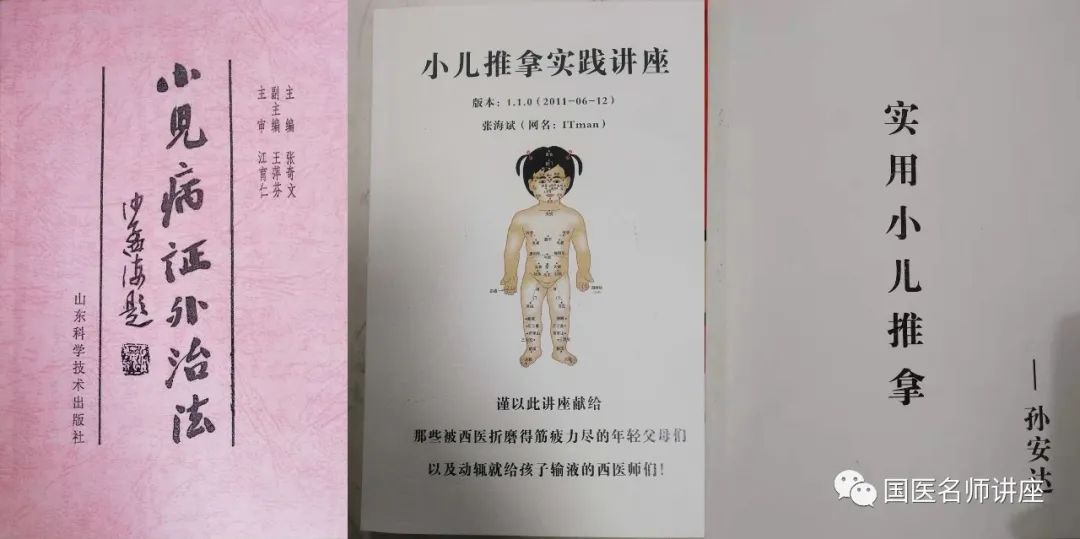Observation (Wang Zhen) refers to the physician’s assessment of a patient’s condition through visual inspection. The content of observation includes a general assessment of the overall condition of the body, such as observing the spirit and complexion; and a focused assessment of specific areas, such as examining the orifices, identifying rashes, checking urination and defecation, and observing fingerprints. The results of observation are generally objective and reliable. However, it is important to ensure that children remain calm during pediatric observation, conduct the examination in a well-lit area, and be thorough yet focused to enhance the effectiveness of the assessment.

Observation of the spirit and complexion includes assessing the mental state and facial complexion. Through observation of the spirit, one can gain a preliminary understanding of the child’s health condition.
The spirit (Shen) refers to the overall vitality of the body, as well as the mental awareness and cognitive activities of a person. The spirit is an external manifestation of the sufficiency and harmony of the organs, qi, blood, essence, fluids, yin, and yang, which is particularly important in children. Observing the spirit includes assessing mental state, consciousness, posture, and facial features. The eyes are the windows to the organs, connecting to the brain, and are particularly important for observing the spirit.
Observation of the spirit primarily distinguishes between presence and absence of spirit. If the body is robust, movements are agile, sleep and activity are normal, expressions are lively, reactions are quick, complexion is rosy and radiant, eyes are bright and lively, breathing is smooth and even, and voice is clear and bright, this indicates presence of spirit, reflecting sufficient righteous qi, and normal organ function, suggesting no illness or mild illness. Conversely, if the body is weak, spirit is listless, reactions are slow, movements are sluggish or involuntary, expressions are dull, crying and laughing are abnormal, complexion is dark, eyes are dull and lifeless, breathing is shallow or uneven, speech is soft and unclear or accompanied by faint cries, this indicates absence of spirit, reflecting insufficient righteous qi, declining organ function, and severe or critical illness.
Observation of complexion primarily focuses on the facial complexion. The typical complexion of Chinese children is slightly yellow; it should be rosy and radiant. The facial complexion can exhibit five colors, each indicating different syndromes.
A bluish complexion indicates poor circulation of qi and blood, often due to wind, cold, pain, or blood stasis. In cases of impending or existing convulsions, the area between the eyebrows and the bridge of the nose may appear pale blue, while the lips and nails may appear bluish-purple, indicating liver wind. Cold syndromes can be divided into deficiency and excess; a grayish-blue complexion indicates yang deficiency, while alternating blue and white indicates severe internal cold. A bluish complexion in pain syndromes is often seen in abdominal cold, usually accompanied by crying and restlessness. In blood stasis syndromes, a bluish complexion may be observed in the lips and face, indicating heart yang deficiency and blood stasis.
A reddish complexion indicates fullness of blood in the facial skin and vessels, often associated with heat syndromes, which can also be divided into excess and deficiency. In cases of exterior heat syndrome, the face may appear red and the eyes red, with chills and fever; in interior heat, the face may appear red with coarse breathing, high fever, and thirst; in deficiency heat, the face may show flushed cheeks and low-grade fever.
In severe cases, a face that is red as if painted or with bright red cheeks often indicates a condition of deficiency yang rising. Children may also appear flushed due to excessive warmth from clothing, overactivity, sun exposure, or crying, which are not pathological.
A yellow complexion that is not normal often results from spleen deficiency and failure to transport fluids and food, commonly indicating deficiency or dampness. Jaundice is a type of dampness; bright yellow like orange indicates damp-heat, while dark yellow like smoke indicates cold-damp. A sallow complexion indicates spleen and stomach qi deficiency; a swollen yellow face indicates spleen deficiency with damp accumulation; a dry yellow complexion indicates exhaustion of qi and blood. If a child appears yellow due to excessive consumption of carrots, pumpkins, tomatoes, or medications like Adefovir, a different assessment is warranted.
A pale complexion indicates insufficient nourishment of qi and blood, often associated with deficiency or cold syndromes. In the early stages of an external pathogen, a pale face without sweating indicates wind-cold invasion; intermittent paleness with crying and restlessness often indicates middle cold abdominal pain; sudden pallor with cold limbs and sweating indicates qi and yang collapse; a pale face without luster and pale nails often indicates deficiency of nutritive blood; a pale face with swelling of limbs and face often indicates yang deficiency with water retention. If a child rarely sees sunlight and has a fair complexion, this should be assessed separately.
A dark complexion often results from deficiency of yang qi, failure to transform dampness, and stagnation of qi and blood, indicating deficiency-cold, water retention, or blood stasis syndromes. A child with a bluish-black complexion and cold limbs indicates internal accumulation of yin-cold; a grayish-black complexion often indicates kidney qi deficiency; a blackish lip indicates long-term heart yang deficiency; purple-black lips and fingers often indicate heart yang deficiency with blood stasis; a pale black complexion that is shallow and floating often indicates kidney yang deficiency with internal water retention. If the skin appears red-black due to frequent sun exposure or wind, this is not pathological.
Observation of shape refers to assessing the body shape and posture. Through the observation of spirit, complexion, shape, and posture, one can preliminarily infer the nature of the disease.
Shape refers to the physical form, including the head, body, limbs, skin, muscles, bones, and fingers and toes. From the external appearance of a child, one can gauge the condition of the internal organs, analyze the occurrence and development of diseases, and predict prognosis.
If a child has normal height, moderate weight, soft skin, strong muscles, robust bones, a well-proportioned body, and shiny black hair, this indicates sufficient congenital endowment and good nutritional development. Conversely, if the body is short, muscles are thin, bones are weak, and hair is sparse and yellow, this indicates insufficient congenital endowment and improper postnatal care leading to malnutrition.
A large head with an open fontanelle and inability to lift the neck often indicates kidney deficiency with water accumulation; a pigeon chest or hunchback with weak limbs often indicates liver and kidney deficiency; a swollen face and limbs that sink upon pressure indicate water retention; an obese body with excessive fat indicates phlegm-damp stagnation; loose skin and weak muscles indicate spleen and stomach qi deficiency; dry and thin skin with a sallow complexion indicates deficiency of both qi and blood; thin limbs with a distended abdomen indicate spleen deficiency with accumulation.

Posture refers to the dynamic and static stance. The dynamic and static posture reflects the overall balance and coordination of the internal organs’ yin and yang. Excessive movement with little stillness indicates yin deficiency and yang excess, while little movement with excessive stillness indicates yin excess and yang deficiency.
If a child is restless, agitated, and unable to sit or lie still, this indicates internal heat of liver yang and heart fire; if a child is lethargic, prefers to lie down, and is weak, this indicates internal accumulation of yin-cold. If the body is curled up and seeks maternal comfort, this often indicates external wind-cold; if the child lies flat with legs extended and discards covers, this often indicates intense heat; if the child breathes rapidly and sits up, this indicates lung qi rebellion; if the child has shortness of breath and worsens with movement, this indicates deficiency of lung and spleen qi or inability of the kidney to receive qi; if the child lies on their stomach and rubs their abdomen, this often indicates abdominal pain due to accumulation; if the child is trembling and has stiff limbs, this indicates liver wind; if the child is grasping at the air and speaking nonsensically, this indicates clouding of the spirit; if the child has a hunched back and cannot walk steadily, this indicates weakness of kidney qi. Comparing the child’s motor abilities with those expected for their age can help identify developmental delays early.
The orifices refer to the five senses and nine orifices. The tongue is associated with the heart, the liver opens to the eyes, the lungs open to the nose, the spleen opens to the mouth, and the kidneys open to the ears and the lower orifices. Changes in the internal organs can often be reflected in the orifices. Some pediatric diseases have specific manifestations in the orifices.
(1) Tongue examination: The normal tongue of a child appears flexible, with a light red and moist body and a thin white coating.
Children often stick their tongues out and do not retract them, known as “tongue protrusion”; if the tongue repeatedly extends to lick the lips and then retracts, this is called “tongue playing.” Tongue protrusion often indicates heat in the heart and spleen, while tongue playing may be a precursor to convulsions; both can also be seen in children with congenital abnormalities or low intelligence.
The normal tongue color is light red. A pale white tongue indicates deficiency of qi and blood; a dark red tongue indicates heat entering the nutritive blood; a dry red tongue indicates heat injuring yin fluids; a purple or dark tongue indicates qi and blood stagnation. A tongue that is large, red, and prickly, resembling a bayberry, is known as “bayberry tongue,” often seen in cases of scarlet fever.
The tongue coating is produced by stomach qi. Newborns often have a thin white coating, while a few may have a red tongue without coating that usually turns light red within 48 hours and develops a white coating. A white greasy coating indicates internal cold-dampness or food stagnation; a yellow greasy coating indicates internal damp-heat or food stagnation turning to heat. A geographic tongue, characterized by patches that do not heal, is often due to insufficient stomach qi and yin. If the tongue coating is thick and greasy, accompanied by constipation and abdominal distension, it is referred to as “moldy coating,” indicating food stagnation and obstruction of the middle burner qi. Children often have tongue staining due to medications or foods, such as olives, black plums, iron supplements, which can turn the tongue black, or blue indigo, which can turn it blue, or milk and soy milk, which can turn it white, or orange juice and egg yolk, which can turn it yellow, and these should not be mistaken for pathological coatings.
(2) Eye examination: The pupils should be round and flexible, with bright eyes and normal eyelid movement, indicating sufficient liver and kidney essence and blood. Swollen eyelids indicate wind-water invasion; weak eyelid movement indicates deficiency of original qi; if the eyelids do not close during sleep, this indicates spleen deficiency; if the eyelids cannot close when awake, this indicates kidney deficiency. Dull eyes with slow movement indicate insufficient kidney essence; wide-open eyes with a fixed gaze indicate internal liver wind. Yellowing of the sclera indicates damp-heat; red, swollen eyes indicate wind-heat invasion. Sunken eye sockets with no tears during crying indicate severe injury to yin fluids; dilated pupils with absent light reflex indicate loss of righteous qi.
(3) Nose examination: Nasal congestion with clear discharge indicates external wind invasion; yellow, thick nasal discharge indicates wind-heat affecting the lungs; persistent thick nasal discharge with a foul odor indicates heat accumulation in the lung meridian; fresh blood from the nose indicates lung heat forcing blood to flow recklessly; dry nostrils indicate lung heat injuring yin. Flared nostrils with rapid breathing indicate lung qi obstruction.
(4) Mouth examination: The mouth includes the lips, oral cavity, gums, and throat, with tongue examination discussed separately.
Pale white lips indicate deficiency of qi and blood; pale blue lips indicate wind-cold invasion; red lips indicate heat; purple-red lips indicate blood-heat stasis. A bluish ring around the mouth indicates a precursor to convulsions; flushed cheeks with pale lips indicate signs of scarlet fever.
A comprehensive examination of the oral cavity is necessary. Pale mucous membranes indicate deficiency or cold; red mucous membranes indicate excess or heat. Ulceration and erosion in the oral cavity indicate heat accumulation in the heart and spleen; white patches in the mouth indicate oral thrush. Swelling of the parotid duct openings between the upper and lower molars, resembling millet, with no pus upon massage indicates mumps; if pus is present, it indicates parotitis.
Teeth are remnants of bone, and gums are the network of the stomach. Delayed eruption of teeth indicates insufficient kidney qi; bleeding gums indicate stomach fire; grinding teeth during sleep indicates internal liver fire; swollen gums indicate heat in the stomach.
In cases of external invasion, a red throat indicates wind-heat; pale color indicates wind-cold. Red vesicles in the throat indicate external pathogenic toxins; increased follicles in the throat indicate stasis-heat obstruction. Red and swollen tonsils indicate heat accumulation in the lung and stomach; large but not red tonsils indicate yin injury with unresolved stasis-heat or deficiency of lung and spleen qi. A grayish-white pseudomembrane in the throat that cannot be wiped away and causes bleeding upon wiping often indicates diphtheria.
(5) Ear examination: A thick, rosy ear shell in children indicates abundant congenital kidney qi; a thin, soft ear shell indicates insufficient congenital kidney qi. Ear pain with purulent discharge indicates wind-heat invading the throat and transmitting to the ear or excessive liver and gallbladder fire rising; swelling around the ear lobe indicates wind-heat toxins transmitted to the shaoyang meridian.
(6) Examination of the lower orifices: A contracted scrotum indicates external wind-cold or insufficient kidney qi; a relaxed scrotum indicates qi deficiency or external heat illness. A scrotum with enlarged, non-red testicles that appear red upon light indicates hydrocele; a scrotum with a mass that changes in size and can be pushed back indicates inguinal hernia. A scrotum that is uniformly swollen, shiny, and cool often indicates kidney yang deficiency with water retention; a swollen, painful scrotum with redness and heat often indicates damp-heat accumulation.
Redness around the anus indicates heat, while pale indicates deficiency. Red, dry, and brown skin around the anus indicates internal heat injuring fluids; erosion and redness indicate damp-heat accumulation in the large intestine. A relaxed anus that does not close indicates insufficient original qi; rectal prolapse indicates descent of middle qi. Anal itching with moist scratching in the perineum often indicates pinworm disease.
Rashes are observed on the skin. Generally, spots that are large and flat, not raised above the skin, and do not fade upon pressure are called macules; small, raised spots that fade upon pressure are called papules. Rashes in pediatrics are often seen in externally contracted epidemic diseases, such as measles, rubella, wind rash, scarlet fever, and chickenpox, and can also be seen in internal injury diseases, such as purpura.
Rashes can be classified as yin or yang. Yang rashes refer to rashes caused by heat toxins, often seen in warm diseases with heat entering the nutritive blood, characterized by varying sizes and bright red or purple colors, often accompanied by fever and other symptoms. Yin rashes are often due to injury or accompanied by external pathogens, with light red indicating qi not containing blood, light purple indicating yin deficiency with internal heat, and purple-red indicating blood-heat with stasis.
Papules can be classified into vesicular and papular based on the presence of fluid. Vesicles with clear fluid are seen in chickenpox; vesicles with cloudy fluid are seen in pustular diseases. Small, dark red papules that start sparse and become dense, especially on the face, are often seen in measles; dense rashes that are rose-colored, often seen in rubella; sparse, light red rashes with mild fever are often seen in wind rash; bright red skin with dense rashes, high fever, and a red tongue are often seen in scarlet fever; maculopapular rashes of varying sizes, often itchy, are seen in urticaria.
In newborns, the stool appears sticky and pasty, dark green, and odorless, occurring 2-3 times a day, known as meconium.
Stools of breastfed infants are typically yellowish, occasionally green, slightly sour-smelling, and of uniform consistency, occurring about 3 times a day. Stools of infants primarily fed cow’s or goat’s milk are light yellow, relatively dry and hard, with an odor, occurring 1-2 times a day. As children transition to adult diets, their stools also resemble those of adults.
Changes in stool consistency to watery, with increased frequency, quantity, and volume, indicate diarrhea. Watery stools that are yellow and contain mucus, with a foul odor, indicate damp-heat accumulation in the intestines; thin, clear stools with bubbles and mild odor, with severe abdominal pain, indicate wind-cold dampness obstructing the intestines; thin stools that are light yellow with curds and a sour odor indicate milk accumulation causing diarrhea; thin stools that are yellow with undigested food residues and a foul odor indicate food accumulation causing diarrhea; thin, loose stools with undigested material that are light and odorless, occurring easily after eating, indicate spleen deficiency with food stagnation; clear, watery stools that do not digest, with continuous diarrhea, indicate deficiency of spleen and kidney yang. Stools that are red and white with mucus, accompanied by urgency and heaviness, often indicate damp-heat dysentery; grayish-white stools that are not yellow often indicate bile duct obstruction.
Clear, abundant urine indicates cold, including external cold invasion or internal cold due to yang deficiency; yellow, scant urine indicates heat, including heat injuring fluids or internal heat due to yin deficiency. Dark yellow urine indicates internal damp-heat; yellow-brown urine resembling strong tea indicates damp-heat jaundice. Red urine or increased red blood cells upon microscopy indicates hematuria, which can be caused by various conditions; bright red indicates reckless blood-heat, light red indicates qi not containing blood, dark red indicates stasis-heat accumulation, and dark red indicates yin deficiency with blood-heat.
Fingerprints refer to the superficial veins on the radial side of the index finger. Infants have thin and tender skin, making the vessels easy to reveal, so pediatric assessments often include fingerprint observation for children under 3 years old.
Fingerprints are divided into three sections, from the web to the fingertip: the first section is the wind section, the second section is the qi section, and the third section is the life section (see diagram). When observing fingerprints, the child should be held in a well-lit area, with the examiner using their left thumb and index finger to hold the child’s fingertip, and the right thumb gently pressing from the life section towards the wind section to reveal the fingerprints.
Fingerprint diagnosis can be summarized as “floating and sinking distinguish exterior and interior, red and purple distinguish cold and heat, pale and stagnant determine deficiency and excess, and the three sections measure severity.” Floating fingerprints indicate that the disease is superficial; sinking fingerprints indicate that the disease is internal. Bright red fingerprints indicate external wind-cold; purple-red fingerprints indicate stagnation of evil heat; pale red fingerprints indicate internal deficiency-cold; blue-purple fingerprints indicate internal stasis-heat; dark purple fingerprints indicate deep stasis and severe condition.
Pale fingerprints that flow smoothly indicate deficiency of qi and blood; purple fingerprints that are sluggish and slow indicate internal stagnation of evil, such as food accumulation, phlegm-dampness, and stasis-heat. The three sections refer to the length of the fingerprints; those in the wind section indicate that the disease is superficial and mild; those reaching the qi section indicate that the disease is deeper and more severe; those reaching the life section indicate that the disease is severe; those reaching the fingertip are called “penetrating section,” and if this is not the usual state, it may indicate a critical condition. However, it is important to note that fingerprint diagnosis should be combined with the child’s fingerprint condition when healthy and other clinical manifestations after illness for accurate diagnosis.
【Recommended Learning Materials】↓↓↓↓↓↓

Purchase Books via WeChat:chinanice2018
xs11065024



